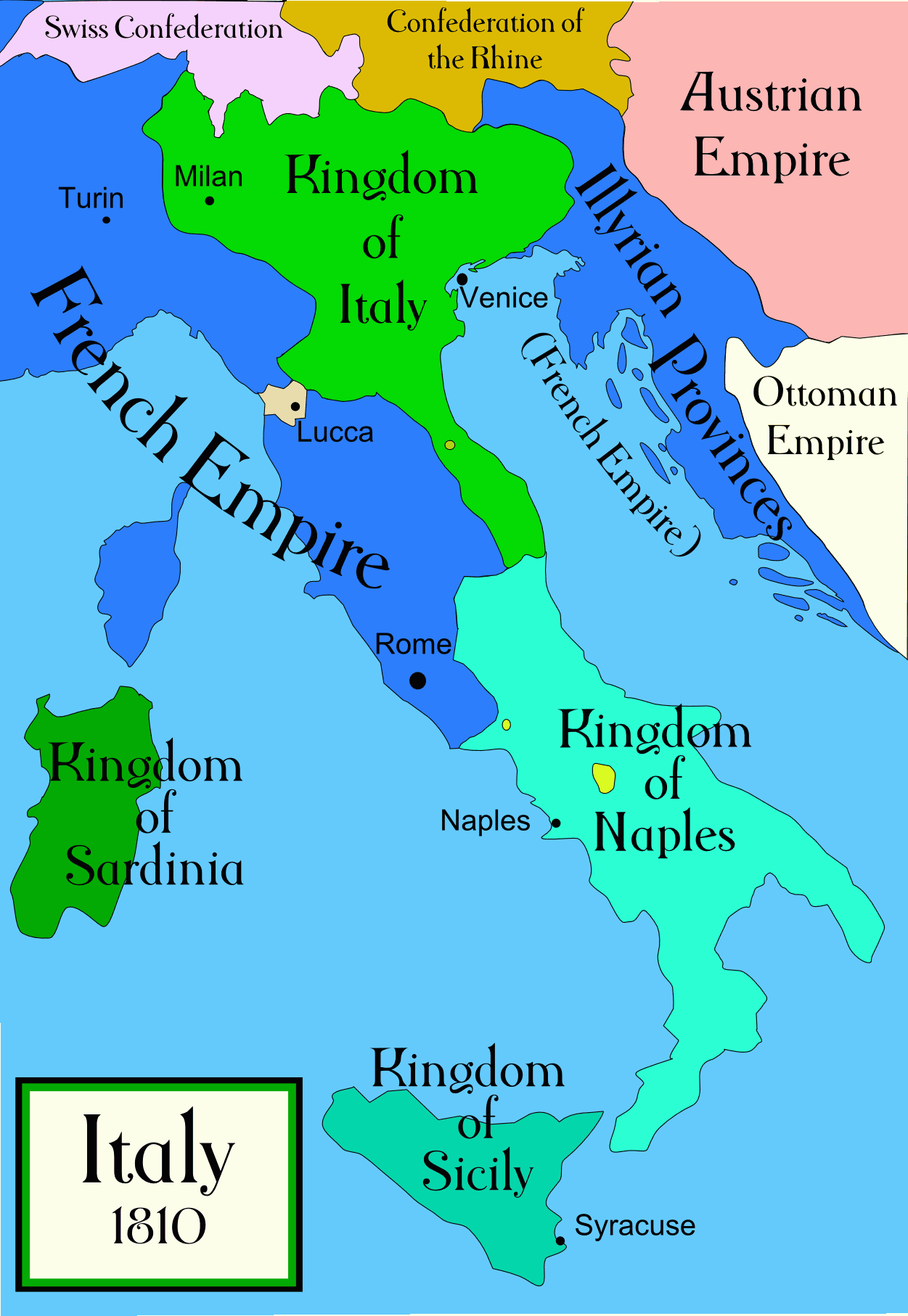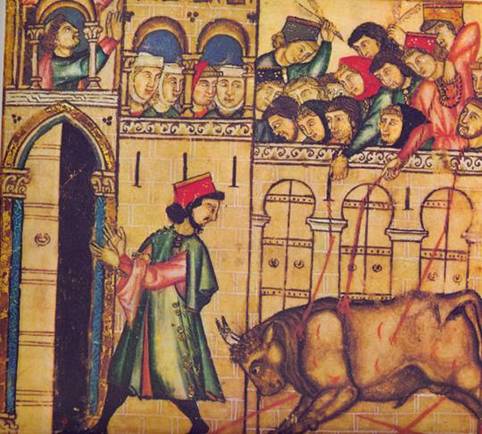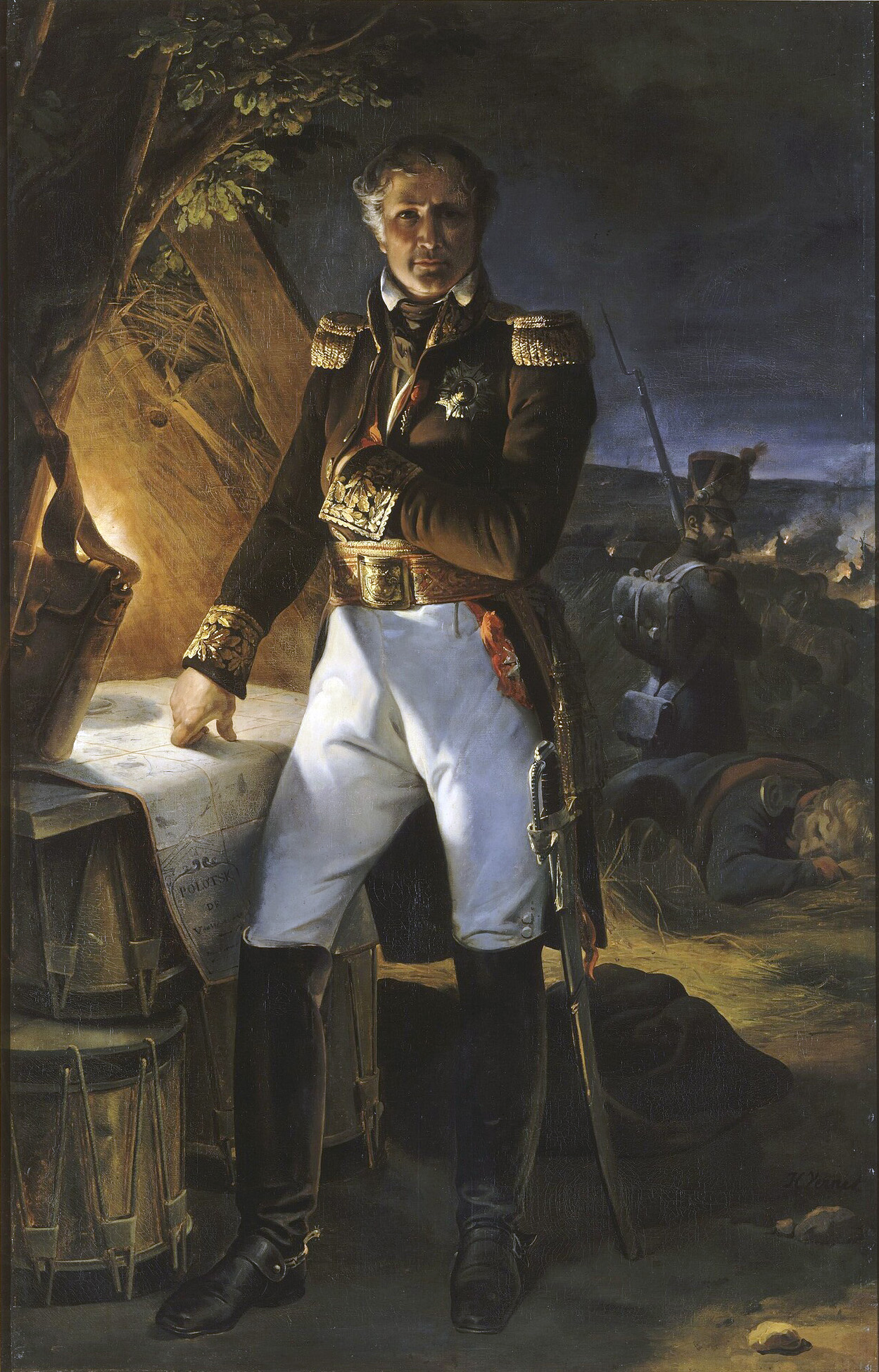|
Battle Of Puerto De Baños
The Battle of Puerto de Baños (12 August 1809) saw a Portuguese-Spanish column led by Robert Wilson attempt to defend a mountain pass against Marshal Michel Ney's VI Corps. After a nine-hour combat, Wilson's force broke up and scattered into the mountains. Baños de Montemayor is located about northeast of Plasencia, Spain. The clash occurred during the Peninsular War, part of a larger struggle known as the Napoleonic Wars. Background In the summer of 1809, the British army of Arthur Wellesley, 1st Duke of Wellington marched into western Spain to join Gregorio García de la Cuesta's Spanish army. Wilson's 3,500-man Portuguese-Spanish force served as the left flank guard of this offensive. The Allied armies defeated King Joseph Bonaparte's Imperial French army at Talavera at the end of July. However, the threat of Marshal Nicolas Soult's large army to the north soon forced Wellesley and Cuesta to withdraw to the west. Battle Having advanced to Escalona Escalona is a ... [...More Info...] [...Related Items...] OR: [Wikipedia] [Google] [Baidu] |
Peninsular War
The Peninsular War (1808–1814) was fought in the Iberian Peninsula by Kingdom of Portugal, Portugal, Spain and the United Kingdom of Great Britain and Ireland, United Kingdom against the invading and occupying forces of the First French Empire during the Napoleonic Wars. In Spain, it is considered to overlap with the Spanish War of Independence. The war can be said to have started when the First French Empire, French and History of Spain (1808–1874), Spanish armies Invasion of Portugal (1807), invaded and occupied Portugal in 1807 by transiting through Kingdom of Spain (1810-1873), Spain, but it escalated in 1808 after First French Empire, Napoleonic France occupied History of Spain (1808–1874), Spain, which had been its ally. Napoleon Bonaparte Abdications of Bayonne, forced the abdications of Ferdinand VII of Spain, Ferdinand VII and his father Charles IV of Spain, Charles IV and then installed his brother Joseph Bonaparte on the Spanish throne and promulgated the ... [...More Info...] [...Related Items...] OR: [Wikipedia] [Google] [Baidu] |
Battle Of Tamames
The Battle of Tamames was lost by part of Marshal Michel Ney's French army under General of Division Jean Marchand in the Peninsular War. The French, advancing out of Salamanca, were met and defeated in battle by a Spanish army on 18 October 1809. Background The Spanish campaign in late 1809 started with the Battle of Talavera. Battle The Spanish drew their forces in a defensive line on a low ridge above the village of Tamames. Despite being on defensive ground, the battle opened badly for the Spaniards under General del Parque, who resorted to severe measures to restore discipline. The Spanish cavalry was routed early on, but fire from del Parque's own infantry quickly brought their retreat to grief and directed them back into the fight. Spanish artillery positions similarly fell to the French but were retaken at bayonet point by del Parque's infantry. The French attacked in massed columns but never in enough strength to dislodge the Spanish. The difficult ground meant th ... [...More Info...] [...Related Items...] OR: [Wikipedia] [Google] [Baidu] |
Battles Of The Peninsular War Involving The United Kingdom
A battle is an occurrence of combat in warfare between opposing military units of any number or size. A war usually consists of multiple battles. In general, a battle is a military engagement that is well defined in duration, area, and force commitment. An engagement with only limited commitment between the forces and without decisive results is sometimes called a skirmish. The word "battle" can also be used infrequently to refer to an entire operational campaign, although this usage greatly diverges from its conventional or customary meaning. Generally, the word "battle" is used for such campaigns if referring to a protracted combat encounter in which either one or both of the combatants had the same methods, resources, and strategic objectives throughout the encounter. Some prominent examples of this would be the Battle of the Atlantic, Battle of Britain, and the Battle of France, all in World War II. Wars and military campaigns are guided by military strategy, whereas batt ... [...More Info...] [...Related Items...] OR: [Wikipedia] [Google] [Baidu] |
Escalona
Escalona is a municipality located in the north of the province of Toledo (province), Toledo, which in turn is part of the autonomous community of Castile-La Mancha, Spain. According to the 2017 census (Instituto Nacional de Estadística (Spain), INE), the municipality has a population of 3,240 inhabitants, many of whom live in the several housing estates outside the town itself. The town lies 30 metres above the right bank of the river Alberche, in the comarca of Torrijos, which is a part of the historical region of New Castile (Spain), New Castile. History Escalona's strategic location, on the Alberche river and between Avila and Toledo, suggests there may have been a fortress there in Roman times or during the Visigothic Kingdom, Visigoth period. Following the Siege of Toledo (1085), conquest of Toledo (1085), by Alfonso VI of León and Castile, it was a key defensive point against raids by the Almoravid dynasty, Almoravides and Almohad Caliphate, Almohades that attacked the ... [...More Info...] [...Related Items...] OR: [Wikipedia] [Google] [Baidu] |
Nicolas Soult
Marshal General Jean-de-Dieu Soult, 1st Duke of Dalmatia (; 29 March 1769 – 26 November 1851) was a French general and statesman. He was a Marshal of the Empire during the Napoleonic Wars, and served three times as President of the Council of Ministers (prime minister) of France. Son of a country notary from southern France, Soult enlisted in the French Royal Army in 1785 and quickly rose through the ranks during the French Revolution. He was promoted to brigadier general after distinguishing himself at the Battle of Fleurus in 1794, and by 1799 he was a division general. In 1804, Napoleon made Soult one of his first eighteen Marshals of the Empire. Soult played a key role in many of Napoleon's campaigns, most notably at the Battle of Austerlitz, where his corps delivered the decisive attack that secured French victory. He was subsequently created Duke of Dalmatia and from 1808, he commanded French forces during the Peninsular War. Despite several initial victories, for ins ... [...More Info...] [...Related Items...] OR: [Wikipedia] [Google] [Baidu] |
Joseph Bonaparte
Joseph Bonaparte (born Giuseppe di Buonaparte, ; ; ; 7 January 176828 July 1844) was a French statesman, lawyer, diplomat and older brother of Napoleon Bonaparte. During the Napoleonic Wars, the latter made him King of Naples (1806–1808), and then King of Spain and the Indies (1808–1813). After the fall of Napoleon, Joseph styled himself ''Comte de Survilliers'' and emigrated to the United States, where he settled near Bordentown, New Jersey, on Pointe Breeze estate overlooking the Delaware River not far from Philadelphia. Early life and career Joseph was born in 1768 as Giuseppe Buonaparte to Carlo Buonaparte and Maria Letizia Ramolino at Corte, the capital of the Corsican Republic. In the year of his birth, Corsica was invaded by France and conquered the following year. His father was originally a follower of the Corsican patriot leader Pasquale Paoli, but later became a supporter of French rule. Bonaparte trained as a lawyer. In that role and as a politician and ... [...More Info...] [...Related Items...] OR: [Wikipedia] [Google] [Baidu] |
Gregorio García De La Cuesta
Gregorio García de la Cuesta y Fernández de Celis (9 May 1741 – 25 November 1811) was a prominent Spanish army officer and commander of Spain's armies at the beginning of the Peninsular War. Charles Oman (1902) stated that: Throughout the two years during which he held high command in the field, Gregorio de la Cuesta consistently displayed an arrogance and an incapacity far exceeding that of any other Spanish general. (Oman, pp. 140–141.) Oman, Charles (1902)''A History of the Peninsula War'', Vol. I, pp. 67–68140–141.''Project Gutenberg''. Retrieved 11 April 2023. Early military career Cuesta entered military service in 1758 as a cadet in the Toledo Infantry Regiment and was sent to Oran that June, where he would be stationed for the following four years Caimari Calafat, Tomeu"Gregorio García de la Cuesta y Fernández de Celis".''Historia Hispanica''. Real Academia de la Historia. Retrieved 8 March 2023. While there, he was promoted to sub-lieutenant of the Granad ... [...More Info...] [...Related Items...] OR: [Wikipedia] [Google] [Baidu] |
Arthur Wellesley, 1st Duke Of Wellington
Field marshal (United Kingdom), Field Marshal Arthur Wellesley, 1st Duke of Wellington (; 1 May 1769 – 14 September 1852) was a British Army officer and statesman who was one of the leading military and political figures in Britain during the late 18th and early 19th centuries, twice serving as Prime Minister of the United Kingdom. He was one of the British commanders who ended the Anglo-Mysore wars by defeating Tipu Sultan in 1799 and among those who ended the Napoleonic Wars in a Coalition victory when the Seventh Coalition defeated Napoleon at the Battle of Waterloo in 1815. Wellesley was born into a Protestant Ascendancy family in Dublin, Kingdom of Ireland, Ireland. He was commissioned as an Ensign (rank), ensign in the British Army in 1787, serving in Ireland as aide-de-camp to two successive lords lieutenant of Ireland. Wellesley was also elected as a Member of Parliament (United Kingdom), member of Parliament in the Irish House of Commons. Rising to the rank of Colon ... [...More Info...] [...Related Items...] OR: [Wikipedia] [Google] [Baidu] |
Napoleonic Wars
{{Infobox military conflict , conflict = Napoleonic Wars , partof = the French Revolutionary and Napoleonic Wars , image = Napoleonic Wars (revision).jpg , caption = Left to right, top to bottom:Battles of Battle of Austerlitz, Austerlitz, Fall of Berlin (1806), Berlin, Battle of Friedland, Friedland, Battle of Aspern-Essling, Aspern-Essling, French occupation of Moscow, Moscow, Battle of Leipzig, Leipzig and Battle of Paris (1814), Paris , date = {{start and end dates, 1803, 5, 18, 1815, 11, 20, df=yes({{Age in years, months, weeks and days, month1=05, day1=18, year1=1803, month2=11, day2=20, year2=1815) , place = Atlantic Ocean, Caucasus, Europe, French Guiana, Mediterranean Sea, North Sea, West Indies, Ottoman Egypt, Egypt, East Indies. , result = Coalition victory , combatant1 = Coalition forces of the Napoleonic Wars, Coalition forces:{{flagcountry, United Kingdom of Great Britain and ... [...More Info...] [...Related Items...] OR: [Wikipedia] [Google] [Baidu] |
Plasencia
Plasencia () is a municipality of Spain belonging to the province of Cáceres, Extremadura. , it has a population of 41,047. Plasencia is located in the Western-Central Iberian Peninsula, to the south of the Sistema Central. Housing primarily lies on the right bank of the . Plasencia is part of the so-called Ruta de la Plata, a north-south commercial path across Western Spain. The founding is generally dated to the late 12th century, with Plasencia achieving its basic development during the late Middle Ages. History Antiquity and the Middle Ages Although Plasencia was not founded until 1186, pieces of pottery found in ''Boquique’s Cave'' provide evidence that this territory was inhabited long before. Pascual Madoz's dictionary details that this ancient territory, either called ''Ambroz'' or ''Ambracia'', was originally given the name ''Ambrosia'' before becoming Plasencia. In the same year that the city was founded, Alfonso VIII of Castile gave the city its independence an ... [...More Info...] [...Related Items...] OR: [Wikipedia] [Google] [Baidu] |
VI Corps (Grande Armée)
The VI Corps of the ''Grande Armée'' was a French military unit that existed during the Napoleonic Wars. It was formed at the '' Camp de Boulogne'' and assigned to Marshal Michel Ney. From 1805 to 1811, the VI Corps fought under Ney's command in the 1805 Austrian Campaign: War of the Third Coalition, Prussian Campaign of 1806 and Polish Campaign of 1807 of the War of the Fourth Coalition. General Jean Gabriel Marchand was in charge of the corps for a period when Ney went on leave. The VI Corps was revived in 1812 for the French invasion of Russia and placed under Marshal Laurent Gouvion Saint-Cyr. It consisted entirely of Bavarian soldiers at that time. During the disastrous retreat from Moscow, the corps was virtually destroyed. In 1813, during the War of the Sixth Coalition, it was rebuilt and reorganized with French troops. Marshal Auguste de Marmont took command of the corps and managed it until Napoleon's abdication in 1814. It took part in many battles including Dresden a ... [...More Info...] [...Related Items...] OR: [Wikipedia] [Google] [Baidu] |







